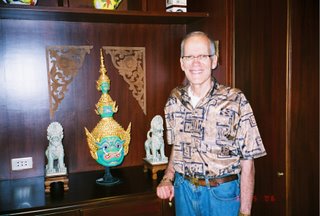Mahler Heavy Comes to Bangkok (February 10, 2010)
Gustav Mahler is an acquired taste. Although Mahler’s nine symphonies have never left the standard repertory, it took Leonard Bernstein to light a fire under the musical world to pay attention to Mahler and then to revere him. Still, it takes a lot of patience and concentration to listen to most Mahler symphonies, and even then, it isn’t exactly clear what one has heard. This is especially true of Mahler’s last completed symphony, his Ninth. To describe its one hour and twenty minutes length as “heavy,” is a better description of it than “tedious” or “boring.”
While composing his Ninth, Mahler may have been suffering from an identity crisis. Mahler was struck by the new music of Arnold Schoenberg, and chromaticism, dissonance and atonality are major parts of this symphony, interweaving themselves with melody and romanticism. Commentators seems to universally associate the symphony with death, the idea being that Mahler was contemplating his own demise (he did die a year or so after finishing the Ninth) and feared that this would be his last musical composition. While scholars debate whether this is true or not, inasmuch as Mahler was already working on his 10th symphony when he died, this type of analysis does little to assist the listener. What, then, does help?
First, the listener needs to make an investment and a commitment. The commitment needed is easy to state: be prepared to sit still and be quiet, really still and really quiet, and listen uninterruptedly for almost an hour and a half. This alone may bring rewards, but is not so easy to do in this age of sound bites and hand-held electronic devices, which apparently require frequent checks from their owners, both in and out of the concert hall. Then, it’s a good idea to listen to this work a few times before the live concert, as I did. Familiarity with the music is a great assist to enjoying a live performance of an unfamiliar work, and for finding meaning in the music.
It took 100 years for Mahler’s Ninth to reach Bangkok, and Thailand’s musical eminence, Somtow Sucharirkul, is to be commended for brining this difficult work to a Bangkok audience for the first time on February 10, 2010. Amazingly enough, with the balconies closed off, the main floor of the Thai Cultural Center was quite full when the Siam Philharmonic Orchestra wandered on stage about 30 minutes late (no explanation was given), followed by portly Maestro Somtow floating in dressed in a bright purple tailcoat. Let’s say this about the performance: it was a good try, but one that is unlikely to be repeated in Bangkok for another 100 years.






